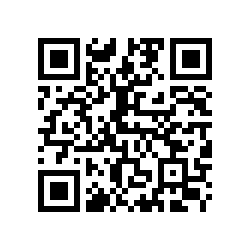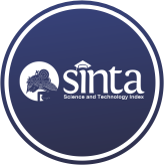Desa Siaga Banjir Berbasis Masyarakat Sebagai Upaya Dalam Mitigasi Bencana di Kecamatan Rawas Ulu Kabupaten Musirawas Utara
(1) Universitas Islam Negeri Raden Fatah, Indonesia
(2) Universitas Islam Negeri Raden Fatah, Indonesia
(3) Universitas Islam Negeri Raden Fatah, Indonesia
(*) Corresponding Author
Abstract
Full Text:
PDFReferences
Bnpb, “Data Bencana Tahun 2023.”
Juhadi, N. Hamid, E. Trihatmoko, M. Herlina, And E. N. Aroyandini, “Developing A Model For Disaster Education To Improve Students’ Disaster Mitigation Literacy,” J. Disaster Res., Vol. 16, No. 8, Pp. 1243–1256, 2021, Doi: 10.20965/Jdr.2021.P1243.
N. Hamid, “Urgensi Pendidikan Kebencanaan Kepadamasyarakat,” Equilib. J. Pendidik, Vol. Vol.8, No., Pp. 232–239, 2020, Doi: 10.26618/ Equilibrium.V8i2.3444, 2020 (In Indonesian).
U. L. U. Rawas And D. In, Kecamatan Ulu Rawas, Vol. 18. 2023.
C. Series, “The Impact Analysis Of Flood Disaster In Dki Jakarta : Prevention And Control Perspective,” 2019, Doi: 10.1088/1742-6596/1339/1/012092.
P. Budiyono, Y., Aerts, J., Brinkman, J. J., Marfai, M. A., & Ward, “Flood Risk Assessment For Delta Mega-Cities: A Case Study Of Jakarta.,” Nat. Hazards, Vol. 75(1), 389, 2015.
N. A. Akhirianto, S. R. Giyarsih, And D. Mardiatno, “Kesiapsiagaan Masyarakat Desa Tangguh Bencana Terhadap Ancaman Tsunami Di Kabupaten Cilacap,” Maj. Geogr. Indones., Vol. 37, No. 2, P. 158, 2023, Doi: 10.22146/Mgi.82871.
A. Harianto, “Kesiapsiagaan Masyarakat Dalam Menghadapi Bencana Banjir Di Indonesia: Studi Kasus Di Wilayah Pesisir.,” J. Sos. Kebencanaan, Vol. 7 (2), Pp. 122-134., 2019.
T. Saragih, “Penggunaan Aplikasi Berbasis Teknologi Informasi Dalam Kesiapsiagaan Masyarakat Menghadapi Banjir Di Wilayah Pesisir,” J. Mitigasi Bencana Alam, Vol. 6 (2), Pp. 122–135, 2021.
M. Rahma Et Al., “Pemanfaatan Teknologi Informasi Dan Komunikasi Untuk Mengembangkan Kompetensi Pedagogik Guru,” No. C, 2021.
M. F. Nurbaiti, N., & Alfarisyi, “Sejarah Internet Di Indonesia. Jurnal Ilmu Komputer, Ekonomi Dan Manajemen (Jikem),” 2023, Vol. 3 (2), 233, [Online]. Available: Https://Ummaspul.E-Journal.Id/Jkm/Article/Download/5985/2783
M. P. Intan Anuggrah Yuandi, St., “Banjir, Sensor Ultrasonik, Arduino Uno Atmega 32, Sistem Informasi, Sms Gateway, Web, Gis,” Vol. 3, No. 1, 2021.
M. J. (2019) Johnson, B. R., & Peart, “The Role Of Technology In Disaster Response And Recovery.,” J. Emerg. Manag., 2019.
A. T. Prastyo, “Model Budaya Literasi Digital Pada Pondok Pesantren Berbasis Perguruan Tinggi Di Masa Covid-19,” Literasi (Jurnal Ilmu Pendidikan), Vol. 13, No. 1, P. 13, 2022, Doi: 10.21927/Literasi.2022.13(1).13-27.
D. Alexander, “Disaster And Emergency Management: The Use Of Information And Communication Technology (Ict).,” 2020.
Keith Smith And David N. Petley, “Environmental Hazards Assessing Risk And Reducing Disaster,” Routledge, Taylor Fr. Elibrary., 2009.
A. Prasetyo And R. Rahmat, “Rekayasa Sistem Peringatan Dini Bencana Banjir Berbasis Iot Menggunakan Raspberry Pi,” J. Teknol. Technoscientia, Vol. 15, No. 1, Pp. 29–35, 2022, Doi: 10.34151/Technoscientia.V15i1.4035.
A. Gunawan, B., & Setiawan, “Pemanfaatan Teknologi Informasi Dalam Mitigasi Bencana Banjir,” J. Pengabdi. Kpd. Masy., Vol. 4(2), Pp. 78–84, 2019.
A. Y. S. Siska Kania Oktapian, Suryana, “Mitigasi Bencana Banjir Yang Dilakukan Masyarakat Di Desa Bojong Kecamatan Majalaya Kabupaten Bandung,” Geoarea, Vol. 1 No. 2, 2018.
; Et Al Rahmawati, S., “Peran Media Sosial Dalam Penyebaran Informasi Mitigasi Bencana Banjir Di Indonesia,” J. Teknol. Inf. Dan Komun., Vol. 5 (1), Pp. 67–78, 2019.
H. Zulkarnaen, “Pendekatan Holistik Dalam Mitigasi Banjir: Konsep Dan Implementasi.,” J. Tek. Lingkung., Vol. 5(1), Pp. 25–39, 2019.
Y. Zhu, “Social Media Platforms And Rural-Urban Connectivity: A Comprehensive Study.,” J. Digit. Commun., 2018.
S. Haryanto, “Efektivitas Simulasi Evakuasi Bencana Banjir Dalam
Meningkatkan Respons Masyarakat.,” J. Sos. Kebencanaan, Vol. 12(2), Pp. 45–55, 2020.
DOI: https://doi.org/10.30645/kesatria.v6i1.556
DOI (PDF): https://doi.org/10.30645/kesatria.v6i1.556.g551
Refbacks
- There are currently no refbacks.
Published Papers Indexed/Abstracted By:














